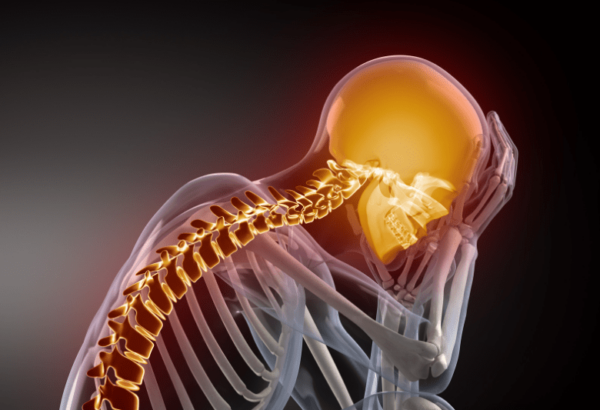Ranging from mild head injuries, concussions to severe traumatic brain injuries (TBI), are a significant concern in both sports and day-to-day activities. Annually, millions of individuals globally experience head injuries due to accidents, falls, sports, and physical assaults.
Despite the commonality of these injuries, the full extent of their long-term consequences is not always immediately apparent. Among these, vertigo stands out as a particularly debilitating symptom that may not manifest until years after the initial injury.
Vertigo is characterized by a sensation of spinning or dizziness, where either the individual feels as if they are moving or their surroundings are moving around them. This condition can be highly disruptive, affecting an individual’s ability to maintain balance, perform routine tasks, and enjoy a quality life.
While vertigo can result from various causes, including inner ear disorders, medication side effects, and migraines, there’s a notable link between vertigo and past head injuries, including mild head injury. This connection underscores the importance of understanding and addressing the potential delayed neurological impacts of such injuries, particularly as mild head injuries can lead to the development of Benign Paroxysmal Positional Vertigo (BPPV), increasing the risk and potential recurrence of BPPV following such injuries.
The onset of vertigo years after a head injury underscores the brain’s complexity and how injuries can affect its function long after the apparent healing of physical symptoms. This article will explore the mechanisms through which head injuries can lead to later development of vertigo, shedding light on the importance of monitoring for and addressing this symptom, even years after an injury has occurred.
Understanding Vertigo and Its Connection to Head Injuries
Definition and Symptoms of Vertigo
Vertigo is a specific form of dizziness characterized by the sensation that one’s surroundings are spinning or moving around them, even when there is no actual movement. This sensation can be mild and barely noticeable, or it can be severe enough to affect daily activities and cause nausea or vomiting.
Vertigo symptoms may include imbalance, lightheadedness, a floating feeling, nausea, vomiting, a sensation of fullness in the ear, and hearing loss. Episodes of vertigo can last from a few minutes to several hours or even days, and they may come on suddenly or gradually worsen over time. Additionally, some individuals with vertigo, particularly following head injuries, may experience double vision as a symptom.
Mechanisms Linking Head Injuries to Vertigo
Head injuries can lead to vertigo through several mechanisms, primarily involving damage to the inner ear or disruptions in the brain’s pathways that regulate balance and spatial orientation.
- Damage to the Inner Ear: The inner ear contains structures essential for maintaining balance, including the inner ear vestibular system, which sends signals to the brain about head and body movements relative to gravity. A head injury can disrupt these signals, leading to vertigo.
For instance, a blow to the head can dislodge otoliths (tiny crystals in the ear that help detect movement) from their usual positions, causing benign paroxysmal positional vertigo (BPPV), where changes in head position trigger vertigo episodes.
- Labyrinthine Concussion: A specific type of vestibular injury resulting from direct head trauma is known as a labyrinthine concussion. This condition can lead to symptoms such as balance problems, dizziness, and vertigo, stemming from damage to the vestibular system within the inner ear. Understanding the pathophysiology and treatment modalities for labyrinthine concussion is crucial in managing posttraumatic vertigo and related vestibular disorders.
Additionally, neck injury, neck region trauma, and neck trauma can also contribute to vertigo through damage to the vestibular system and nerves in the neck region. These injuries can lead to symptoms such as dizziness, vertigo, lightheadedness, and spatial disorientation, highlighting the importance of considering the neck region when diagnosing and treating vertigo post-trauma.
- Disruptions in Neural Pathways: The brain interprets signals from the inner ear, eyes, and sensory nerves to maintain balance and spatial orientation. A head injury can disrupt these signals or how the brain processes them, leading to difficulties in maintaining balance and the sensation of vertigo.
Traumatic brain injuries can also result in diffuse axonal injury, where the brain’s long connecting nerve fibers are damaged, thereby affecting communication between different brain regions involved in balance and spatial orientation.
- Post-Traumatic Migraines: Some individuals develop migraines after a head injury, which can include vertigo as a symptom. These post-traumatic migraines may occur immediately after the injury or develop over time, contributing to ongoing episodes of vertigo.
- Psychological Factors: Psychological factors, such as anxiety and depression, which are common after head injuries, can also exacerbate or contribute to the sensation of vertigo. The stress from worrying about the potential causes and consequences of vertigo can create a feedback loop that worsens the condition.
Understanding the connection between head injuries and vertigo is crucial for diagnosing and treating this condition effectively. It underscores the importance of taking head injuries seriously, even if they initially appear minor, and highlights the need for ongoing monitoring for symptoms like vertigo that may emerge later. Through prompt recognition and treatment, individuals can manage vertigo more effectively, improving their quality of life post-injury.

Common Types of Head Injuries Leading to Vertigo
Traumatic Brain Injury (TBI) and Its Impact on Balance and the Inner Ear
Traumatic Brain Injury (TBI) encompasses a broad spectrum of head injuries, from mild to severe, resulting from an external force such as a blow or jolt to the head. The impact on balance and the inner ear can be significant, with TBI patients often experiencing vertigo and dizziness. Additionally, TBIs can lead to issues with blood pressure regulation, including blood pressure drops, which exacerbate balance issues and contribute to vertigo due to autonomic nervous system dysfunction.
These issues arise due to the injury’s effect on the vestibular system, located in the inner ear, which plays a crucial role in maintaining balance. According to the Model Systems Knowledge Translation Center (MSKTC), individuals with TBI frequently encounter balance problems, as the injury can disrupt the vestibular system’s normal functioning, leading to vertigo and a heightened risk of falls[^1].
Mild Traumatic Brain Injury (mTBI) and Concussion as Precursors to Vertigo
mTBI, commonly known as concussion, is a less severe form of brain injury that can nonetheless lead to persistent vertigo and dizziness. Research published in PubMed highlights that even mild concussions can have long-lasting effects on balance and spatial orientation, with symptoms persisting for months or even years post-injury. This extended duration of symptoms underscores the need for comprehensive post-concussion care and monitoring.
The Role of Motor Vehicle Accidents, Falls, and Contact Sports in Causing Head Injuries That Result in Vertigo
Motor vehicle accidents, falls, and participation in contact sports are among the leading causes of head injuries resulting in vertigo. The nature and severity of the vertigo can vary significantly depending on the specific circumstances of the injury. E-Medicine provides insights into how the variability of trauma from these sources can lead to vertigo.
For instance, a high-speed vehicle accident might cause more severe brain injuries compared to a fall from a standing height, potentially leading to more pronounced or longer-lasting vertigo symptoms. Regardless of the cause, the common denominator is the physical impact to the head, which disrupts the normal function of the inner ear and brain’s balance mechanisms.
Understanding the common types of head injuries that can lead to vertigo is crucial for diagnosis and management. Recognizing the sources and mechanisms of these injuries helps healthcare providers tailor treatments to address the specific needs of each patient. Furthermore, acknowledging the role of various common incidents in causing head injuries that lead to vertigo emphasizes the importance of safety measures and protective gear to prevent these injuries, particularly in high-risk activities like driving, sports, and occupational hazards.
Delayed Onset of Vertigo After Head Injuries
The manifestation of vertigo following a head injury may not always be immediate. This delay in onset can be attributed to a variety of factors, underscoring the complex interplay between the initial trauma and the subsequent development of symptoms. It’s important to note that about half of patients with post-head injury vertigo may experience recurring episodes, indicating the need for ongoing monitoring and management. Many patients report reduced symptoms of vertigo with proper treatment and management, highlighting the potential for significant improvement in quality of life.
Why Vertigo May Not Appear Immediately
One primary reason for the delayed onset of vertigo after a head injury is the body’s intricate healing process. Initially, the brain and other affected areas may focus on recovering from the immediate impact, with symptoms like vertigo emerging only after this initial phase.
Additionally, the autonomic nervous system (ANS) plays a crucial role in regulating balance, and nervous system ANS dysfunction can lead to delayed symptoms of vertigo following a head injury. This is because the ANS’s dysregulation may not become apparent until after the initial healing phase, contributing to the onset of vertigo as the body struggles to maintain balance and spatial orientation.
Furthermore, the progression of damage within the inner ear or to the neural pathways involved in balance and spatial orientation might evolve over time. Damage that was not immediately debilitating can become more pronounced as it affects the delicate structures of the inner ear or disrupts the brain’s processing of vestibular signals.
Development of Benign Paroxysmal Positional Vertigo (BPPV) Post-Trauma
BPPV post-trauma is a notable consequence of head injuries where even minor or moderate trauma can lead to significant risk. BPPV occurs when otoconia, tiny calcium carbonate crystals in the inner ear, are dislodged due to the impact, leading to episodes of vertigo especially with changes in head position.
Studies highlighted on Wiley Online Library indicate that the risk of developing BPPV after head trauma is considerable and correlates with the severity of the trauma These findings underscore the importance of monitoring individuals who have experienced head trauma for signs of BPPV, even if their initial injuries seemed minor.
The implications of delayed-onset BPPV are significant, affecting an individual’s quality of life and increasing the risk of falls and further injuries. Recognizing the connection between head trauma and the development of BPPV is crucial for timely diagnosis and treatment. Effective management of BPPV can substantially improve outcomes for those suffering from vertigo after a head injury, highlighting the need for vigilance and prompt action when symptoms arise.
Diagnosing and Treating Vertigo Stemming from Head Injuries
The diagnosis and treatment of vertigo resulting from head injuries involve a comprehensive approach that considers the complex interplay between the vestibular system, the brain, and the body’s healing processes. Addressing vertigo effectively requires a tailored strategy that takes into account the underlying causes and the individual patient’s needs, including other symptoms such as posttraumatic vertigo, which may involve diagnostic maneuvers like the Dix-Hallpike and Epley maneuvers. These symptoms can indicate the presence of conditions like chronic benign paroxysmal positional vertigo (BPPV), often accompanied by pain and other symptoms that necessitate a thorough understanding of the nature of trauma and its relationship with facial bone fractures and the risk of posttraumatic complications.
Patients who have undergone treatment for vertigo following head injuries often report significant improvements. This multidisciplinary approach focuses on accurate assessment and personalized treatment plans that may include neurointegration therapy and vestibular therapy.
In the treatment options for vertigo, it is crucial to include therapies that foster improved communication between the vision and vestibular systems. This holistic approach is essential for effective vertigo management, especially in cases stemming from head injuries.
Diagnostic Approaches
Diagnosing vertigo related to past head injuries begins with a detailed medical history and physical examination. Healthcare providers may inquire about the nature of the injury, the onset of vertigo symptoms, and any other associated symptoms (such as hearing loss or tinnitus). Diagnostic tests may include:
- Vestibular Testing: Tests like the Videonystagmography (VNG) or the Vestibular Evoked Myogenic Potentials (VEMP) can assess the function of the inner ear and its communication with the brain.
- Hearing Tests: Since the inner ear is also responsible for hearing, audiometric tests can help determine if vertigo is related to damage within the ear.
- Imaging Studies: MRI or CT scans can be used to visualize the brain and inner ear structures, including identifying temporal bone fractures, looking for evidence of trauma or other abnormalities that could contribute to vertigo.
- Balance Tests: Assessments such as the posturography test measure how well an individual can maintain balance under various conditions, helping to identify specific balance disorders.
Treatment Options and Rehabilitation Strategies
Once diagnosed, the treatment of vertigo stemming from head injuries focuses on alleviating symptoms and improving balance and function. Treatment options may include:
- Vestibular Rehabilitation Therapy (VRT): A specialized form of therapy aimed at restoring vestibular health through customized exercises that target the patient’s specific balance and dizziness issues. VRT helps train the brain to compensate for changes in the inner ear.
- Medications: Drugs can be used to relieve symptoms of nausea or motion sickness associated with vertigo but are usually not a long-term solution.
- Canalith Repositioning Maneuvers: For BPPV, maneuvers like the Epley or Semont can help move the dislodged otoconia back to their proper location in the ear, often providing immediate relief from symptoms.
- Lifestyle Changes and Safety Measures: Modifications to reduce the risk of falls and injuries, such as using assistive devices, and making changes to the home environment, can be crucial for patients with persistent balance issues.
According to Flint Rehab, dizziness after a head injury is a common issue, affecting a significant portion of those who have suffered a TBI or concussion. They emphasize the effectiveness of vestibular rehabilitation therapy in treating post-traumatic vertigo and dizziness, highlighting the importance of early intervention and tailored rehabilitation strategies.
Incorporating a multidisciplinary approach that includes physical therapy, occupational therapy, and sometimes psychological support can significantly improve outcomes for individuals dealing with vertigo after a head injury.
Long-Term Management and Recovery
For individuals dealing with chronic vertigo following a head injury, navigating daily life can be challenging. However, with effective management strategies, ongoing support, and therapy, many can lead fulfilling lives despite these challenges. Here are insights into coping with chronic vertigo, the role of continuous support, and the potential for recovery and adaptation over time.
Strategies for Coping with Chronic Vertigo
- Personalized Vestibular Rehabilitation: Continuing with vestibular rehabilitation exercises tailored to one’s specific needs is crucial. These exercises help improve balance and reduce dizziness by encouraging the brain to adapt to changes in the inner ear.
- Lifestyle Modifications: Incorporating changes that reduce vertigo triggers — such as managing stress, avoiding sudden movements that can provoke dizziness, and maintaining a healthy diet and hydration level — plays a significant role in managing symptoms.
- Safety Precautions: Implementing safety measures at home to prevent falls, like securing rugs, installing grab bars in the bathroom, and ensuring rooms are well-lit, can help individuals feel more secure in their environment.
The Importance of Ongoing Support and Therapy
- Psychological Support: Chronic vertigo can be emotionally taxing, leading to feelings of frustration, anxiety, or depression. Access to psychological support, whether through counseling or support groups, can provide a much-needed outlet and coping strategies.
- Regular Medical Follow-ups: Continued engagement with healthcare providers allows for the monitoring of symptoms and adjustments in treatment plans as needed. It also offers an opportunity to stay informed about new treatments or therapies.
- Education and Empowerment: Understanding the nature of vertigo and being informed about management techniques can empower individuals to take an active role in their recovery process. Educational resources and workshops provided by healthcare professionals can be invaluable.
Potential for Recovery and Adaptation Over Time
- Adaptation: Over time, the brain can adapt remarkably well to changes in the vestibular system, gradually reducing the severity of vertigo symptoms. This neural plasticity, where the brain forms new connections to compensate for lost functions, is a key element in long-term recovery.
- Improvement with Rehabilitation: Consistent participation in vestibular rehabilitation can lead to significant improvements. Many individuals experience a decrease in the frequency and intensity of vertigo episodes as they continue with their therapy.
- Positive Outlook: While the pace of recovery may vary, many people with chronic vertigo find ways to adapt and enjoy a high quality of life. A positive outlook, combined with strong support networks, can make a substantial difference in the recovery journey.
FAQs
Can a head injury lead to vertigo long after the incident?
Yes, a head injury can cause vertigo months or even years after the initial trauma. This delayed onset can result from changes in the brain or inner ear that evolve over time, including damage to the vestibular system, which is crucial for maintaining balance.
What types of head injuries are most likely to cause delayed vertigo?
All types of head injuries, from mild concussions to severe traumatic brain injuries (TBIs), have the potential to lead to vertigo as a delayed symptom. The risk may increase with the severity of the injury and if the inner ear or vestibular nerve is affected.
How does a past head injury cause vertigo years later?
Years after a head injury, vertigo can occur due to several factors, including the development of scar tissue that affects neural pathways, degeneration of the vestibular system, or the late onset of conditions like BPPV (Benign Paroxysmal Positional Vertigo), where dislodged crystals in the ear canal disrupt normal balance.
Are there specific symptoms that indicate vertigo from a past head injury?
Symptoms that may indicate vertigo from a past head injury include dizziness, a spinning sensation, balance issues, nausea, and difficulties focusing or moving without worsening the dizziness. These symptoms might be triggered or worsened by changes in head position.
What treatments are available for vertigo caused by a head injury?
Treatment options for vertigo resulting from a head injury include vestibular rehabilitation therapy, medications to manage symptoms like nausea, canalith repositioning maneuvers for BPPV, and lifestyle modifications to prevent triggers. Consulting a healthcare provider for a tailored treatment plan is recommended.
Can vertigo from a head injury improve over time?
Yes, with proper treatment and management, many individuals experience an improvement in vertigo symptoms over time. The body’s ability to adapt and compensate for vestibular system changes plays a significant role in recovery. Persistent rehabilitation and care are often necessary for long-term improvement.
Is it possible to prevent vertigo after experiencing a head injury?
While it’s challenging to prevent vertigo entirely after a head injury, early intervention, proper medical care following the injury, and engaging in prescribed rehabilitation exercises can reduce the risk of developing severe vertigo and aid in quicker recovery should symptoms arise.








